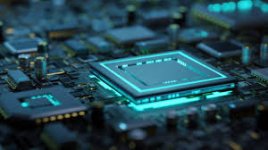Understanding Computer Hardware: The Backbone of Modern Computing
In today’s digital world, we interact with computers almost every day — whether it’s a desktop, laptop, tablet, or smartphone. But behind every smooth experience, from browsing the internet to running heavy applications, lies a collection of physical components known as computer hardware. While software gets all the attention for making computers useful, it is the hardware that forms the backbone of all computing systems.
This article explores what computer hardware is, its different types, key components, how it functions, and its evolving role in the future of technology.
What is Computer Hardware?
Computer hardware refers to the physical parts of a computer system — the components you can touch and see. This includes internal parts like the CPU (Central Processing Unit), motherboard, RAM (Random Access Memory), hard drive, and external devices such as a keyboard, monitor, and mouse.
Hardware works hand-in-hand with software, which provides instructions for the hardware to follow. Without hardware, software cannot run, and without software, hardware is just an idle set of parts.
Categories of Hardware
Computer hardware can be divided into several major categories:
1. Input Devices
These devices are used to input data into the computer.
- Keyboard: For typing text and commands.
- Mouse: For pointing, clicking, and selecting.
- Scanner: For digitizing physical documents or images.
- Microphone: For recording sound or voice.
- Webcam: For capturing video or taking photos.
2. Output Devices
These devices deliver the processed data to users.
- Monitor: Displays the graphical output of a computer.
- Printer: Produces physical copies of digital documents.
- Speakers: Play sound output.
- Projectors: Display computer screen on large surfaces.
3. Processing Devices
These are responsible for processing the data input.
- Central Processing Unit (CPU): Often referred to as the brain of the computer, the CPU handles all calculations and instructions.
- Graphics Processing Unit (GPU): Specialized for rendering graphics and images, especially important in gaming, video editing, and AI tasks.
4. Storage Devices
Storage devices hold data either temporarily or permanently.
- Hard Disk Drive (HDD): Traditional storage device using spinning disks.
- Solid State Drive (SSD): Faster, more durable, and more efficient than HDDs.
- RAM (Random Access Memory): Temporarily stores data that the CPU uses during operations. It’s faster than storage drives but loses data when power is off.
- Optical Drives: CD/DVD drives used to read or write data.
- USB Flash Drives: Portable storage devices for quick data transfer.
5. Communication Devices
Used to connect and communicate with other devices or networks.
- Network Interface Card (NIC): Enables computers to connect to a network.
- Modems: Converts digital signals to analog for internet access.
- Routers: Direct traffic between different networks.
The Importance of Each Component
Each piece of hardware has a specific role, but they all work together to make computing possible.
- The CPU handles logic and calculations.
- The RAM ensures the system runs smoothly by storing active tasks.
- The motherboard acts as a hub, connecting all the components.
- The power supply unit (PSU) distributes power to the hardware components.
- Cooling systems, like fans or liquid coolers, keep the temperature in control to prevent damage.
The Role of Peripherals
Peripherals are hardware components that are attached to the main computer system to extend its functionality.
- External hard drives for backup.
- Gaming controllers, joysticks, and VR gear for immersive gaming.
- External monitors for dual-screen setups.
- Printers and scanners for business use.
Upgrading Hardware
One of the main advantages of desktop computers is that their hardware can be upgraded. For example:
- Upgrading RAM improves multitasking.
- Replacing an HDD with an SSD significantly boosts system speed.
- Adding a dedicated GPU enhances graphics performance.
Laptops and mobile devices, however, offer limited upgrade possibilities due to their compact design.
Hardware in Different Devices
While desktops and laptops are common, hardware is also embedded in:
- Smartphones
- Tablets
- Smart TVs
- Gaming Consoles
- Wearable Tech (e.g., smartwatches)
- Servers and data centers that power the internet
Each of these devices has similar hardware components, scaled down or specialized for their particular use.
Trends and Future of Computer Hardware
The hardware industry is constantly evolving with technology:
- Smaller and faster processors with reduced energy consumption.
- Quantum computing hardware under research to handle complex problems.
- Edge computing bringing data processing closer to devices.
- AI chips designed to handle artificial intelligence tasks.
- Biometric input devices like fingerprint scanners and facial recognition cameras.
Additionally, green computing aims to create hardware that consumes less energy and has a lower environmental impact.
Conclusion
Computer hardware is the essential physical foundation that allows software and digital services to operate. It’s the machinery behind the magic — from enabling personal computing and mobile communication to running complex simulations and powering global businesses.
Understanding computer hardware not only gives insight into how computers work but also empowers individuals to make smarter choices when buying, using, or maintaining their devices. As technology progresses, the role of hardware will continue to grow, becoming more powerful, efficient, and integrated into everyday life.

